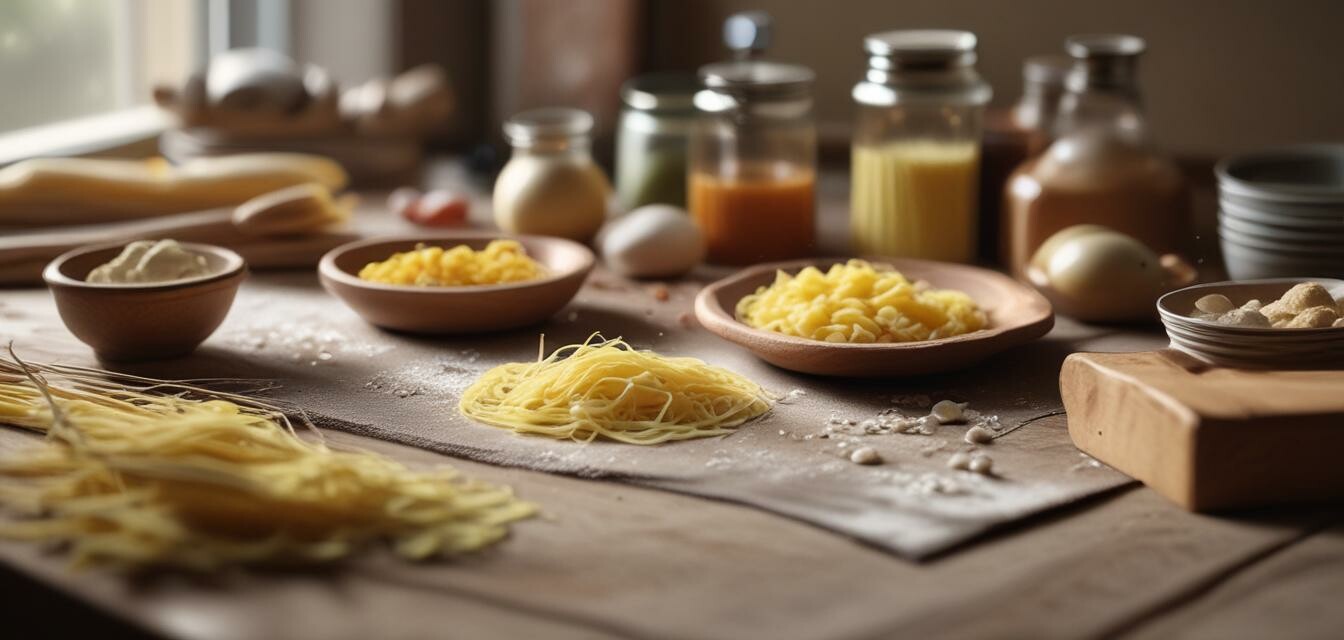
Essential Techniques for Homemade Pasta
Key Takeaways
- Homemade pasta requires quality ingredients and technique.
- Understanding the dough consistency is crucial for the perfect texture.
- Various pasta shapes require different rolling and cutting methods.
- Drying and storing pasta properly enhances its shelf-life and flavor.
Making homemade pasta can transform your cooking experience and elevate your meals to a whole new level. With the right techniques and a little practice, you can create delicious and fresh pasta right from the comfort of your kitchen. This article will explore essential techniques for mastering homemade pasta, ensuring your culinary skills shine.
Ingredients for making pasta dough
The quality of your ingredients plays a significant role in the texture and flavor of your pasta. Here are the essential elements:
| Ingredient | Function |
|---|---|
| All-purpose flour | Forms the base of the dough. |
| Eggs | Adds richness and flavor. |
| Salt | Enhances flavor. |
| Olive oil | Improves elasticity and texture. |
Basic pasta dough recipe
Here’s a simple recipe to create your pasta dough:
- Combine 2 cups of all-purpose flour and a pinch of salt in a mound on a clean surface.
- Create a well in the center and add 3 large eggs and 1 tablespoon of olive oil.
- Using a fork, beat the eggs while gradually incorporating the flour from the edges.
- Knead the dough by hand for about 10 minutes until it is smooth and elastic.
- Wrap the dough in plastic wrap and let it rest for at least 30 minutes before rolling.
Rolling and shaping your pasta
Creating different pasta shapes requires various rolling and cutting methods. Here are a few popular types:
Tips for rolling and shaping pasta
- Use a pasta machine for uniform thickness.
- Dust with flour to prevent sticking.
- Adjust the thickness dial on the machine for different pasta types.
- Use a sharp knife or pasta cutter to shape your pasta.
Common pasta shapes and their techniques
| Pasta Shape | Rolling Technique | Cutting Technique |
|---|---|---|
| Fettuccine | Roll to about 1/8 inch thick | Cut into 1/4 inch strips |
| Ravioli | Roll thin and layer dough | Use a ravioli cutter or mold |
| Lasagna | Roll to about 1/16 inch thick | Cut into large sheets |
Drying and storing pasta
Once your pasta is shaped, it's essential to know how to dry and store it effectively. Here are some helpful tips:
- Hang pasta on a drying rack or lay it flat on a floured surface to dry for about 30 minutes.
- Air-dried pasta can be stored in airtight containers for up to 3 months.
- Fresh pasta can be refrigerated for up to 2 days if not immediately cooked.
Serving suggestions
Your homemade pasta can be paired with various sauces and ingredients. Here are some suggestions:
- Marinara sauce: A classic pairing that complements the richness of homemade pasta.
- Alfredo sauce: Creamy and delicious, perfect for fettuccine.
- Fresh vegetables: Incorporate seasonal veggies for a healthy dish.
- Seafood: Light, flavorful sauces work well with thin pasta like angel hair.
Pros
- Fresh taste and better texture compared to store-bought pasta.
- Creative control over flavors and shapes.
- Rewarding cooking experience and satisfaction.
Cons
- Can be time-consuming for beginners.
- Requires practice to perfect the technique.
- Initial ingredient cost may be higher.
With these essential techniques for homemade pasta, you can impress family and friends with your culinary skills. Make sure to practice and experiment with different shapes and sauces. For more tips on cooking techniques, check out our Cooking Tips & Techniques category.